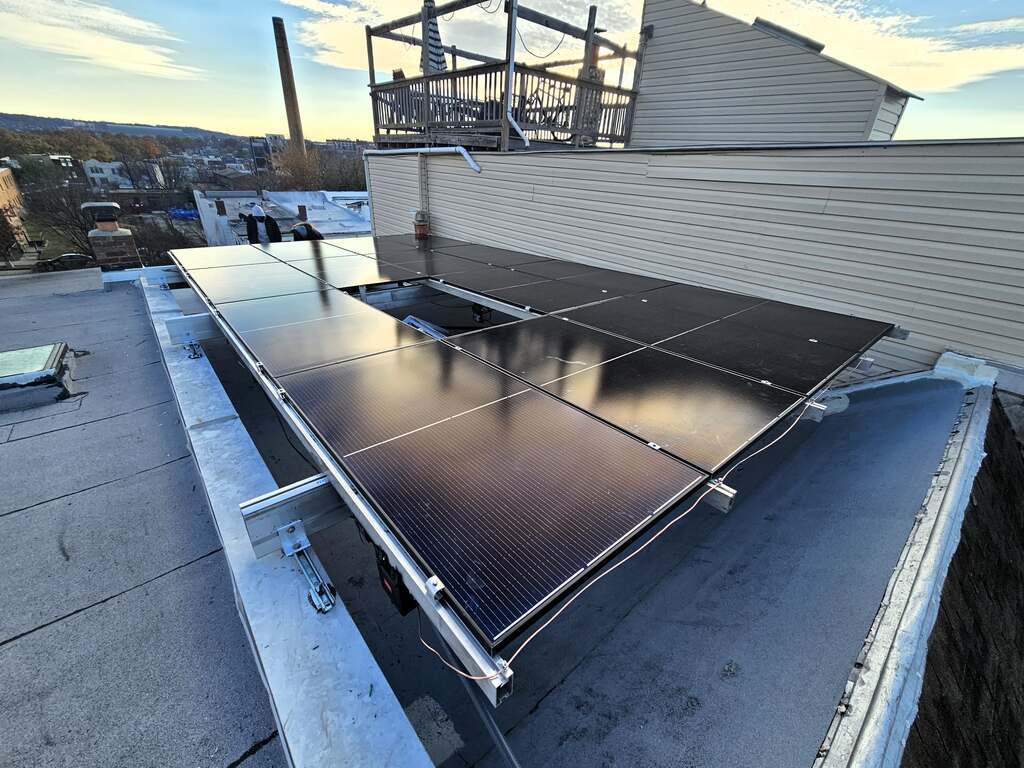
Are you wondering if solar would be a good fit for your roof? Your roof’s direction (north, south, east, or west) is important, as is roof angle and potential shading from trees or buildings near your home. But the roofing material type is important too.
Will my roof work for solar?
First things first: what shape is your roof in? Is it brand new? Has it been hanging in there for 20 years? Since solar panels will be on your roof for several decades, it makes sense to consider roof quality first. If your roof is nearing the end of its life, it may not make as much sense to install solar quite yet, and either make repairs, add a new coating if it’s a flat roof, or replace your roof altogether before going solar.
Uprise offers roofing services as well as solar services. Our Director of Roofing, TJ Bobbitt, brings nearly 30 years of roofing expertise in the DMV, and can get your roof in excellent shape before going solar. Check with your sales representative if you have questions about your roof quality, or if you want to know your options for repair or replacement. Our construction team will also take a look at your roof quality during the site visit once you approve your agreement.
What type of roof is good for solar?
Solar power works well on these types of roofing materials:
- Composite shingles or asphalt shingles
- Tar and gravel
- Standing seam metal
- Tile
Are there roofs that don’t work for solar?
Unfortunately, there are a few roof types that don’t work well for solar. Slate is one; it’s very slippery and is too dangerous for installers. Wood shingles (also known as a shake roof) aren’t ideal for solar either. If you have a slate or wood roof, you will likely need to replace your roof before going solar.
Now, let’s explore options for ideal roofing materials.
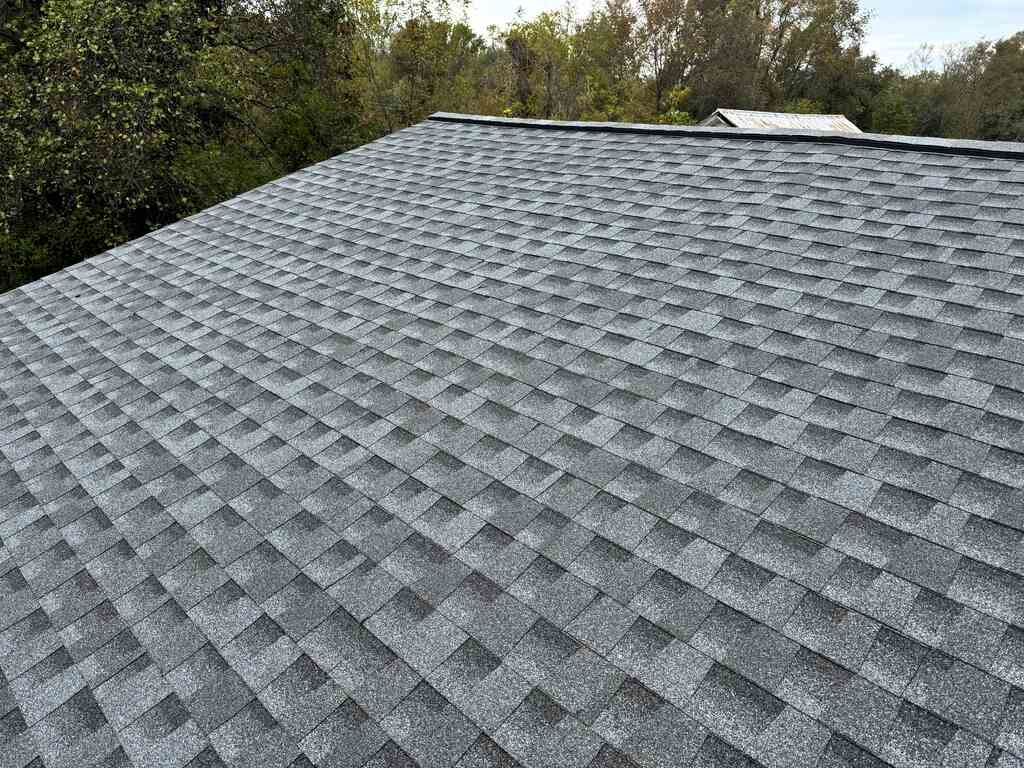
Composite shingles or asphalt shingles
If you have a pitched roof, chances are good you have composite shingles as your roofing material. They’re the most common material for sloped roofs, and since they’re flexible yet still strong, they’re fantastic for installing solar. Composite shingles can last between 12 and 30 years, depending on the shingle quality and the weather they endure.
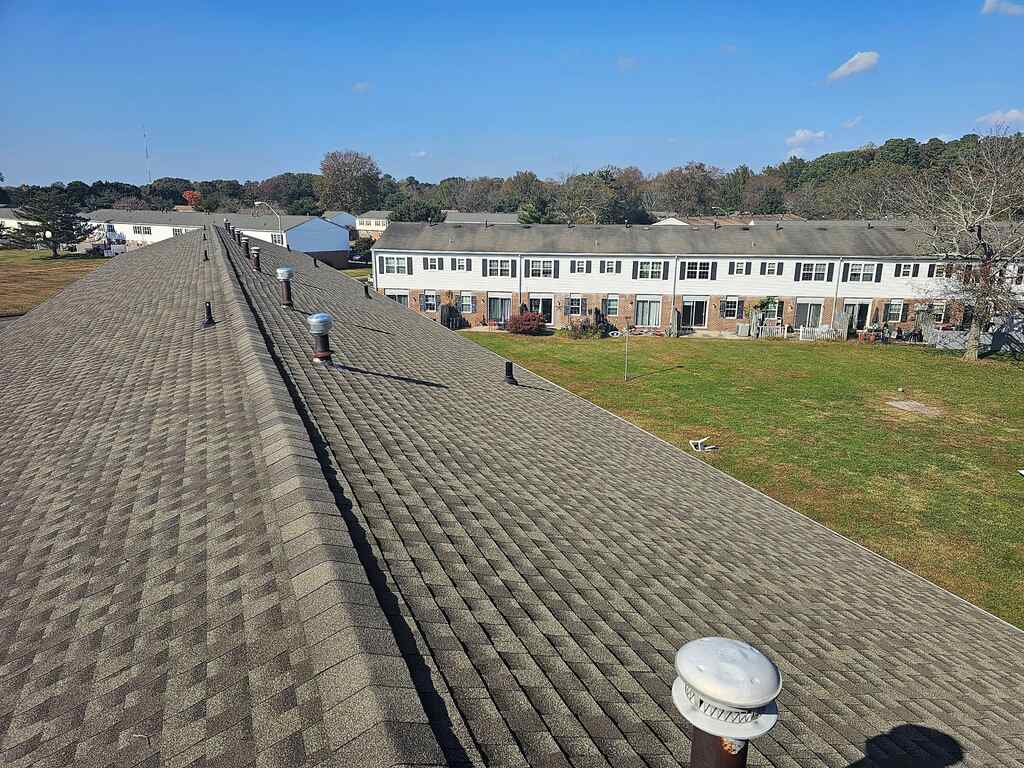
Again, shingle lifespan is an important consideration. If you’re 20 years into your shingle roof, now might not be the best time to go solar. If you’re only a couple years in and your shingles are in good quality, it’s a great time to go solar. Uprise’s no-cost solar program does include one uninstall/reinstall for your solar panels if you do need a new roof, or if you need to make repairs.
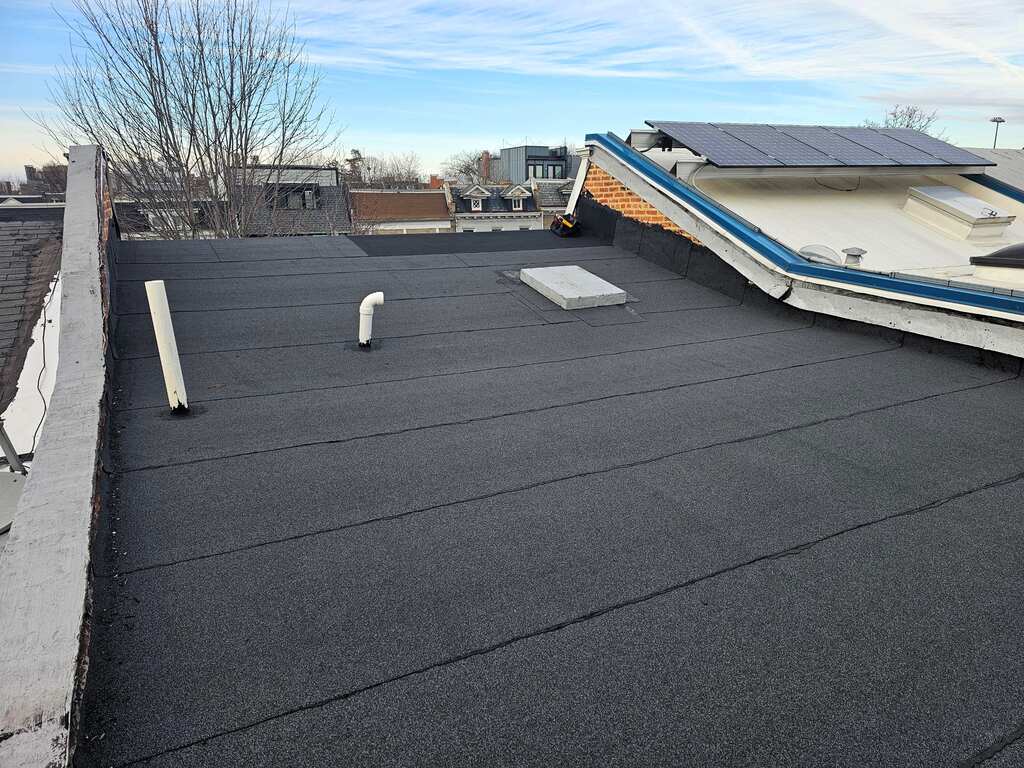
Tar and gravel
If your roof is flat, you might have a tar and gravel roof! It’s a common roofing material for flat roofs, and works well for solar too. For Uprise’s flat roof installations, we can either install the racking system, or framework for the solar panels, directly to the flat roof, or use a parapet-to-parapet racking system, which means we attach aluminum rails to your parapets (also known as party walls) and attach the solar panels to those rails. Tar and gravel roofs can last up to 20 years.
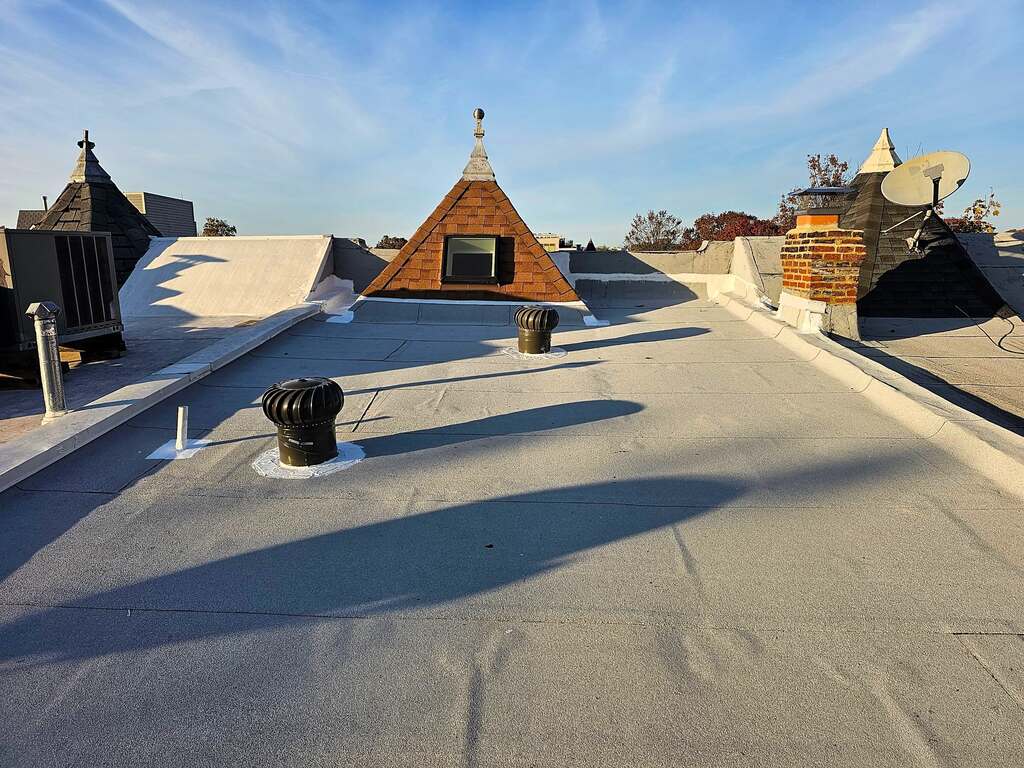
If you have a flat roof, instead of tar and gravel you might have a black rubber membrane or white thermoplastic membrane as your roofing material. Those also work for solar, and we’ve installed on membrane rooftops too!
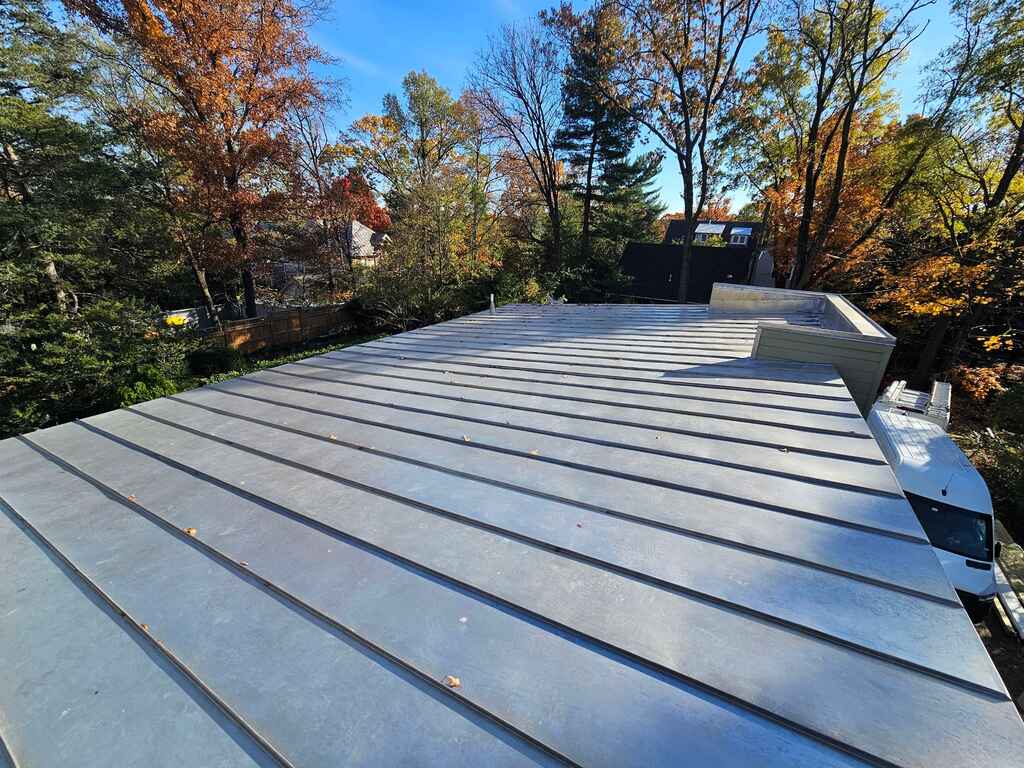
Standing seam metal
Solar installs on metal roofs with standing seams don’t require any drilling into the metal. The solar panels can simply clamp onto the seams. Metal is long-lasting too, with a lifespan of 40 to 75 years, so it’s a great option for solar. However, it is more expensive.
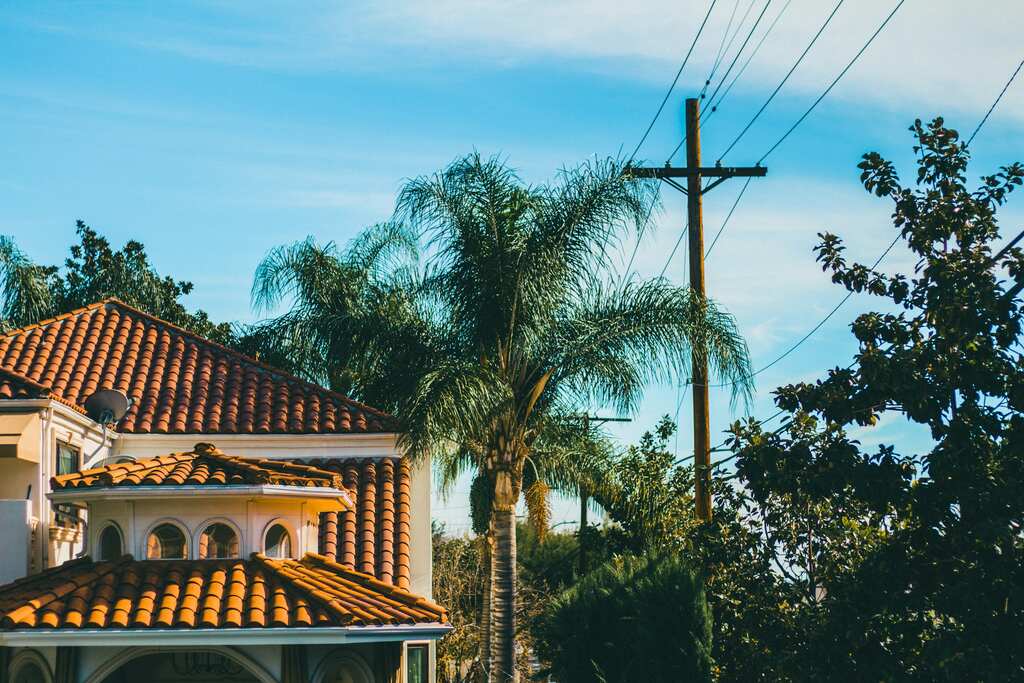
Tile
Tile roofs aren’t common in the DMV, but they definitely work for solar. As they are common in other states with large solar markets, installers have created methods to put panels on these roof types. Tile can last over 100 years, but like metal, it’s expensive.
Solar shingles
Instead of installing solar panels on top of a roof, some homeowners opt for solar shingles, which integrate solar into the roofing material. Solar shingles work much like solar panels do; they absorb energy from sunlight and transform that energy into power for your home.
Solar shingles come with pros and cons. They’re designed to be weather-resistant since they’re both generating power and protecting your home, and they’re aesthetically pleasing. But they tend to be more expensive and sometimes take longer to install. Also, they’re typically not quite as efficient as solar panels, with an average efficiency of 19 to 20%. (Solar panels aren’t too much more efficient; the most efficient panel on the market currently is 22.8%.) Uprise does not yet install solar shingles, but we’re working on it!
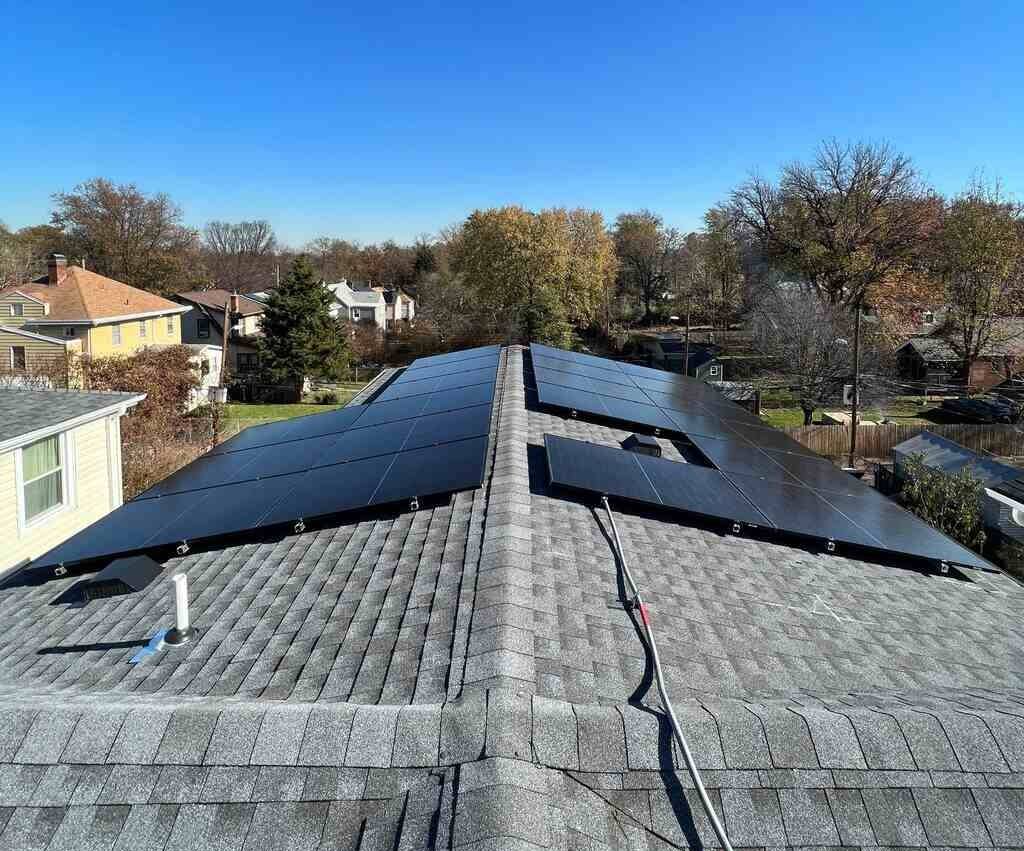
Which side of my roof is best for solar?
A south-facing roof is typically best for solar, since it will receive the most sunlight throughout the day. However, roofs facing east or west work well too. North-facing roofs may not make as much sense for solar.
But shading matters too. If you have a south-facing roof that’s shaded all day by nearby trees or buildings, that may actually not be the best side of your roof for solar. We factor in shading and direction when we’re creating your design.
Roof angle matters as well, but not as much as shading or direction. Learn more about these factors in Uprise’s Solar 101 blog post.
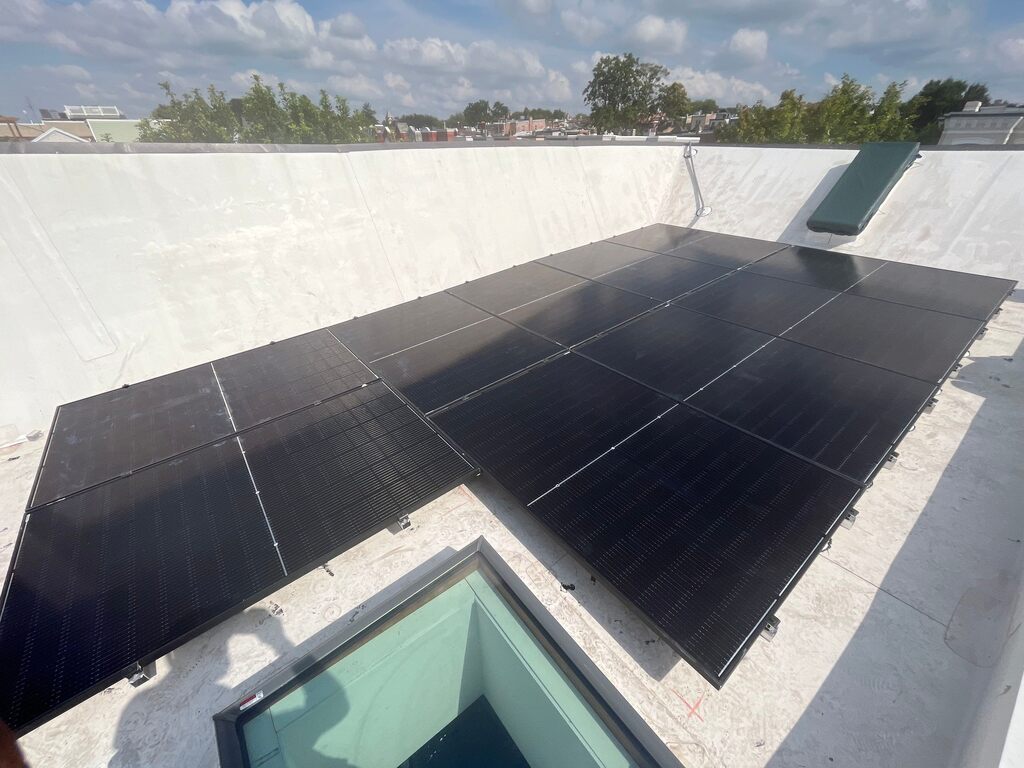
How much roof space do I need for solar?
The ideal roof size for solar is around 480 to 580 square feet. That calculation comes from how much space you need for an individual solar panel (around 24 square feet), and how many panels one typical home requires (around 20 panels).
However, these numbers are going to vary based on your power use. Washington DC regulations say a rooftop solar array cannot generate more than 200% of a customer’s past electric use. So if you have a large roof, we may be limited based on that regulation. Even if you do have a smaller roof, a small solar array may still save you money. We welcome questions if you’re wondering if your roof size will be a factor for solar.
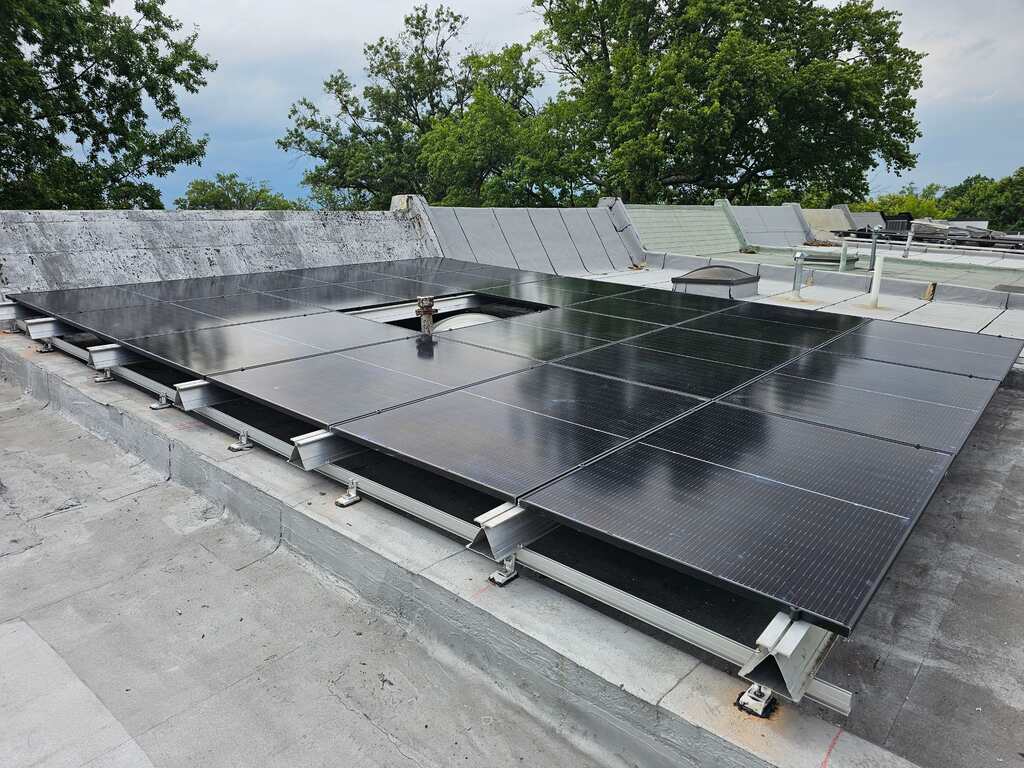
Are pitched or flat roofs better for solar?
Technically, pitched roofs tend to be better for solar; the steeper angle of pitched roofs (versus flat roofs) means the panels will likely generate more power. However, the DMV is full of flat roofs, and Uprise has installed on numerous flat roofs. Solar panels on flat roofs still save customers a significant amount of money.
I’m ready to go solar!
Think solar might be a perfect fit for your roof? Even if you’re unsure, we would be happy to explore your options with you. Ask us your questions! Call us at (202) 280-2285 or fill out our form online to get a quote and start your solar journey.
